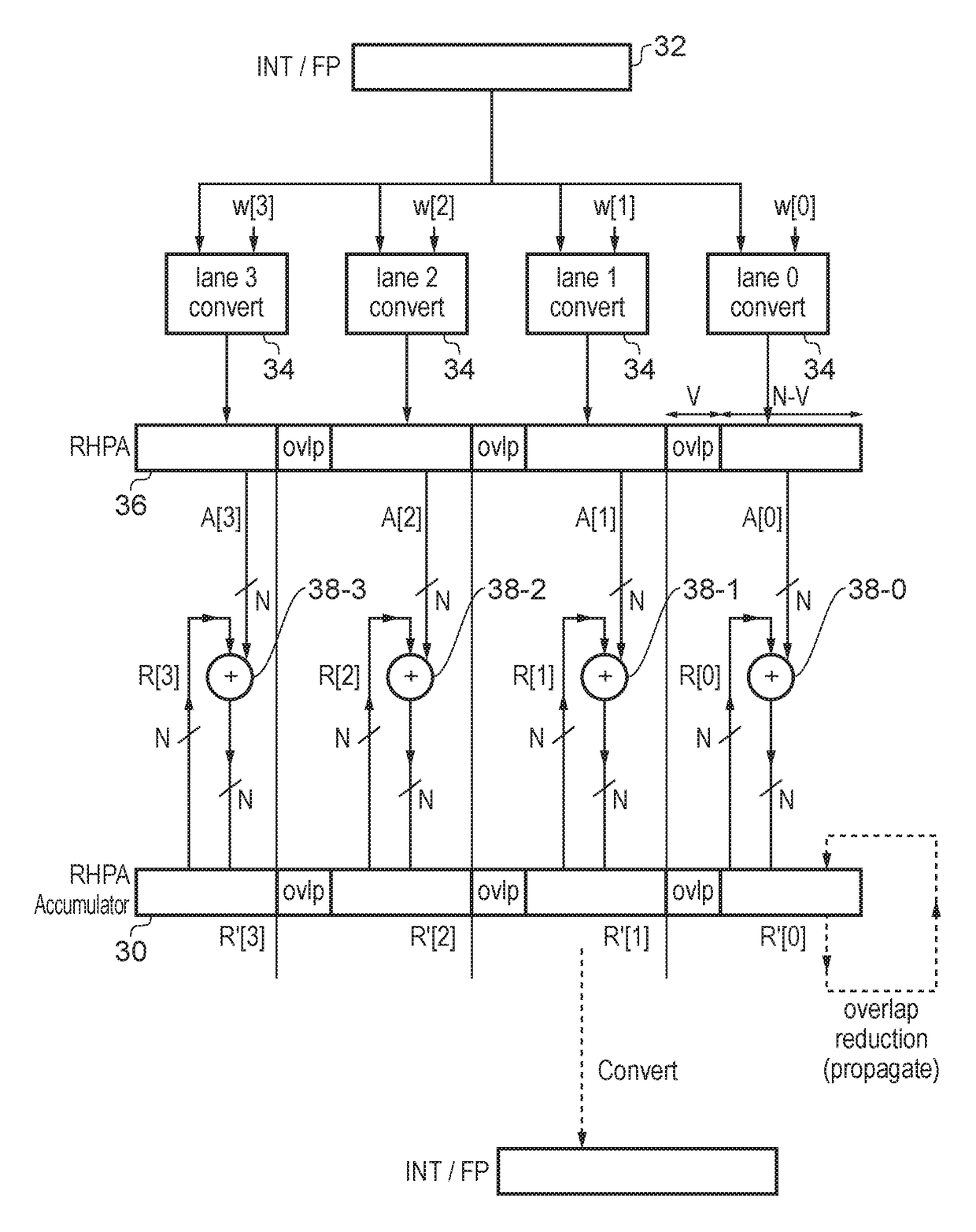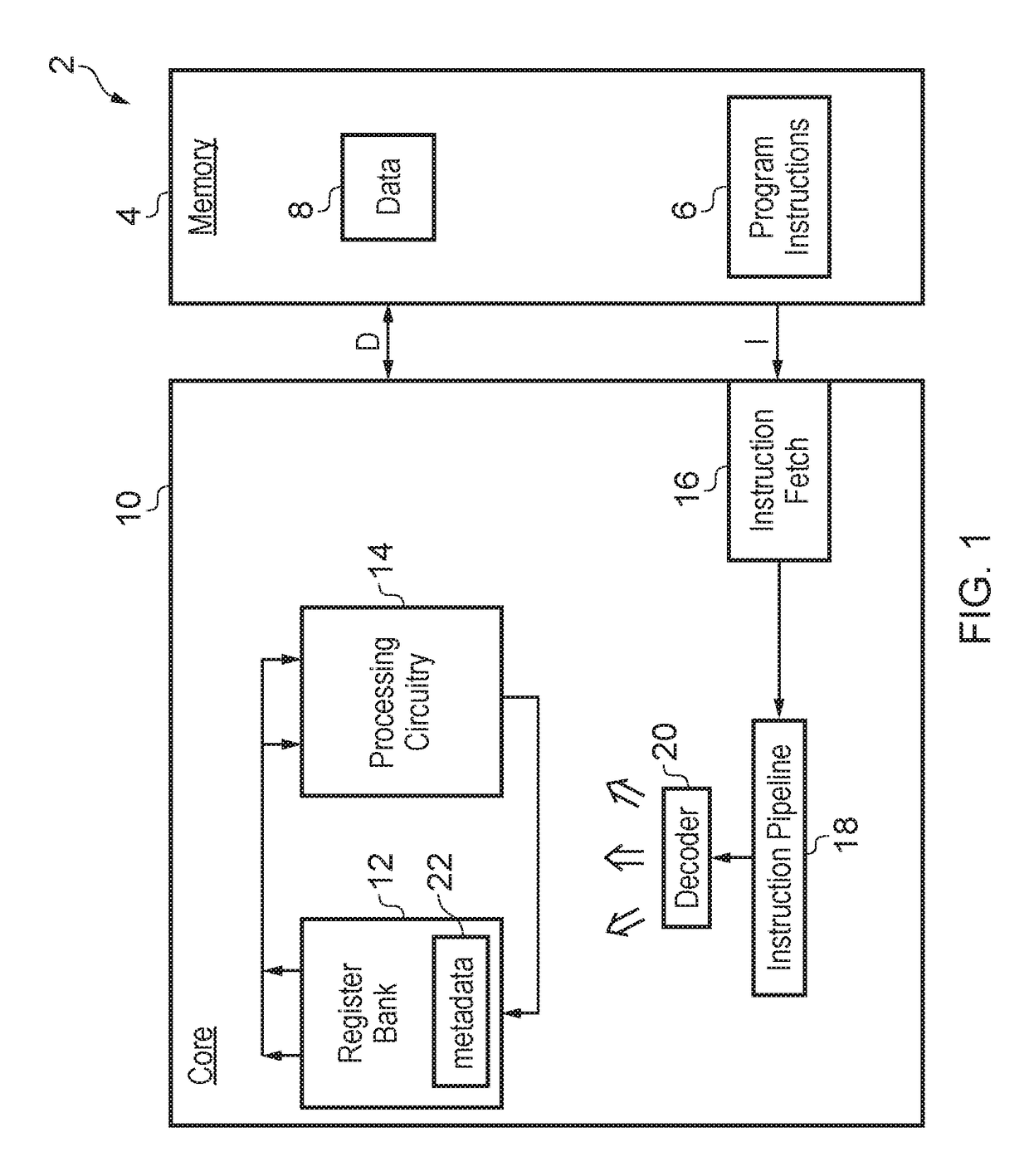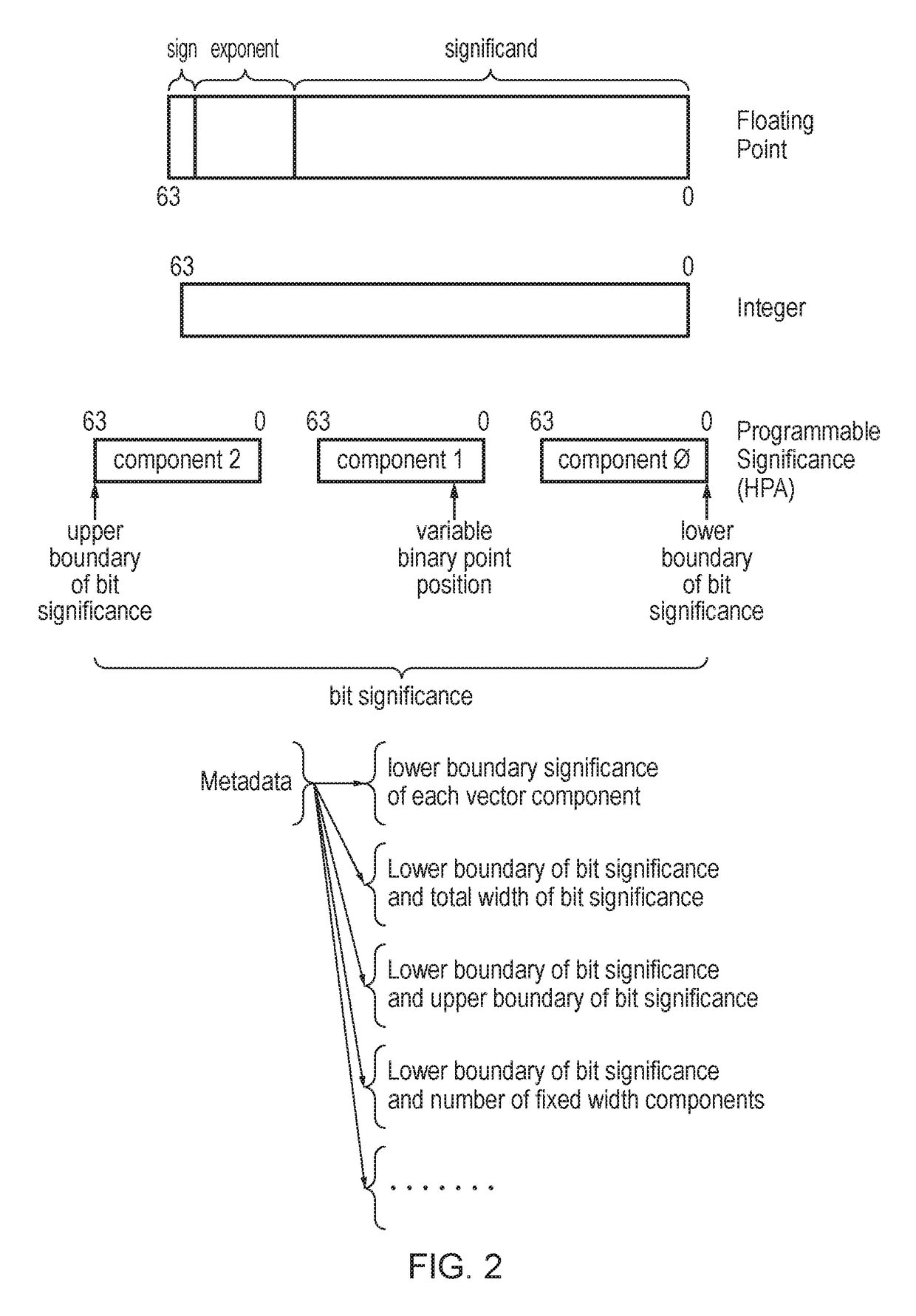Redundant representation of numeric value using overlap bits
a numeric value and overlap bit technology, applied in the field of data processing, can solve the problems of difficult parallelization of floating-point arithmetic, relatively slow floating-point arithmetic, and general non-associative calculations
- Summary
- Abstract
- Description
- Claims
- Application Information
AI Technical Summary
Problems solved by technology
Method used
Image
Examples
example 1
ositive Single Precision FP Number to HPA
Input 32-b FP number=+1.fffffe×239
Exponent(FP)−Zw[n] for the four lanes (Zw values taken from introduction above, with ovlp=4):
[0538]Lane 3: 39−77=−38; negative, therefore all zeroes
[0539]Lane 2: 39−17=+22; positive, therefore shift left by 22+1 places
[0540]Lane 1: 39−−43=+82; positive, therefore shift left by 82+1 places
[0541]Lane 0: 39−−103=+142; positive, 142+1=143≧60+24, therefore all zeroes
(Note: if the left shift distance in a lane ≧64-ovlp+significand wordlength, the lane is set to 64′b0 because the significand will be completely shifted out of that lane's non-overlapping range.)
FIG. 31 shows the final result, where underlined hex digits are ovlp bits.
The numeric values of the four lanes are as follows (written as 2's complement numbers multiplied by Zw[n]):
Lane 3: 0
Lane 2: 64′h0000_0000_007f_ffff×217=+7f_ffff×217
Lane 1: 64′h0800_0000_0000_0000×2−43=+1×216
Lane 0: 0
To check that the conversion has been successful, the sum of the lane...
example 2
egative Single Precision FP Number to HPA
Here is the conversion procedure applied to the same FP number, but now negated.
Input 32-b FP number=−1.fffffe×239
Exponent(FP)−Zw[n] for the four lanes are the same as before:
[0542]Lane 3: 39−77=−38; negative, therefore all zeroes
[0543]Lane 2: 39−17=+22; positive, therefore shift left by 22+1 places
[0544]Lane 1: 39−−43=+82; positive, therefore shift left by 82+1 places
[0545]Lane 0: 39−−103=+142; positive, 142+1=143≧60+24, therefore all zeroes
FIG. 32 shows the final result, where underlined hex digits are ovlp bits.
The numeric values of the four lanes are as follows (written as 2's complement numbers multiplied by Zw[n]):
Lane 3: 0 (Note: taking the 2's complement of 0 returns 0!)
Lane 2: 64′hffff_ffff_ff80_0001×217=−7f_ffff×217
Lane 1: 64′hf800_0000_0000_0000×2−43=−0800_0000_0000_0000×2−43=−1×216
Lane 0: 0
Σlanes=0+−ff_fffe×216+1×216+0=ff_ffff×216=−1.fffffe×239
Addition in RHPA
[0546]Two RHPA numbers are added by performing a regular 2's complem...
example 3
tion (Causing “Lane Overflow”)
[0547]In the example of FIG. 33, all unspecified hex digits are either all ‘0’ or all ‘f’. Lane 2 has overflowed due to two large positive numbers being added and returning a sum that is too positive to be represented as a 64-b 2's-complement number. Similarly, Lane 0 has overflowed due to two large negative numbers being added and returning a sum that is too negative to be represented as a 64-b 2's-complement number. In the first case, the correct result would be represented as a 65-b 2's-complement number whose m.s.b. is ‘0’; similarly, in the second case, the correct result would be represented as a 65-b 2's-complement number whose m.s.b. is ‘1’.
[0548]Standard 2's-complement overflow logic can be used to detect if overflow has occurred in any lane due to an RHPA addition (i.e. check whether the carry in and the carry out at the m.s.b are the same). If a “lane overflow” has occurred in any lane (except the most significant), the ovlp bits are shifted ...
PUM
 Login to View More
Login to View More Abstract
Description
Claims
Application Information
 Login to View More
Login to View More - R&D
- Intellectual Property
- Life Sciences
- Materials
- Tech Scout
- Unparalleled Data Quality
- Higher Quality Content
- 60% Fewer Hallucinations
Browse by: Latest US Patents, China's latest patents, Technical Efficacy Thesaurus, Application Domain, Technology Topic, Popular Technical Reports.
© 2025 PatSnap. All rights reserved.Legal|Privacy policy|Modern Slavery Act Transparency Statement|Sitemap|About US| Contact US: help@patsnap.com



